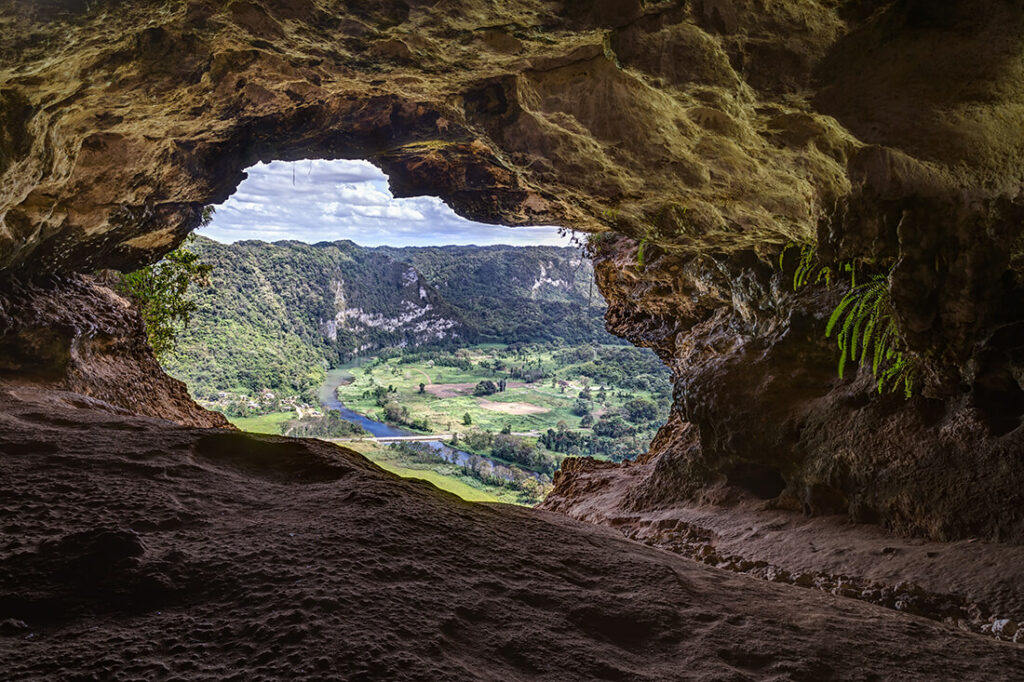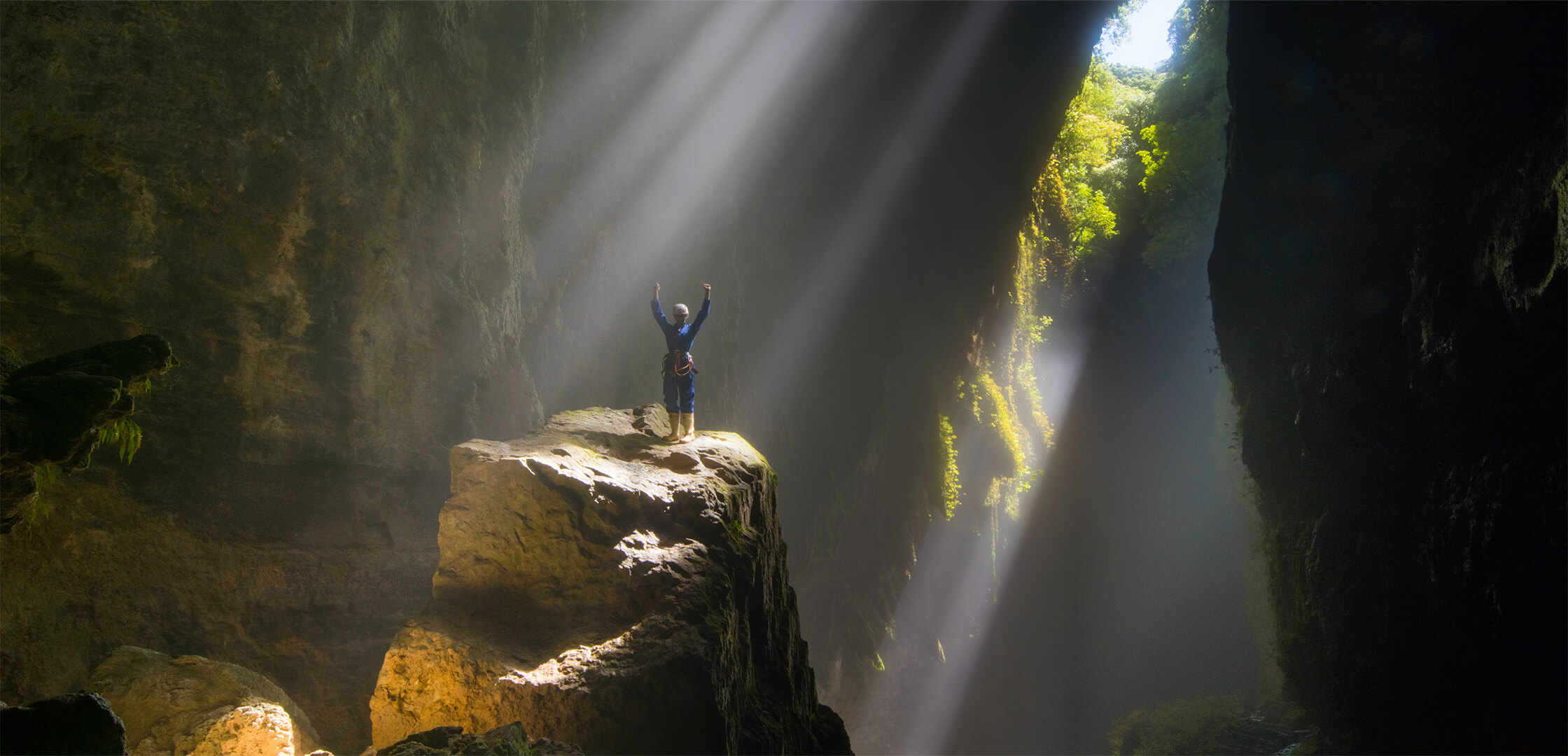Learn About Caves
Archaeologists and anthropologists have discovered humanity’s evolutionary history within caves. Recent and important discoveries of skeletal remains in caves worldwide have revealed previously unknown branches in our evolutionary family tree.
Many cultures, past and present, have a concept of an underworld. Cave entrances serve as doorways between the surface and subsurface, playing key roles in the stories of dozens of religions. Caves preserve many of these stories. Caves are humanity’s first books. Their walls serve as pages on which humankind’s oldest stories were drawn or carved. Epic hunts, creation myths, and political rituals graced cave walls for thousands of years. Between these stone pages on cave floors, humanity’s first sculptures were found.
Cave scientists and explorers look for caves, documenting and studying them. Their important discoveries in the field of hydrology help governments properly and sustainably manage their water resources. Cave biologists work toward a solution to White-nose Syndrome, the epidemic decimating bat populations. Some of the most intriguing discoveries are happening in the field of geomicrobiology. Cave environments are ecologically isolated and extreme. Microbes that have adapted to live in these conditions are called extremophiles. Cave microbes are offering hope for cures to different diseases and the discovery of new antibiotics. Especially fascinating are the cave microbes teaching us where and how to find life on Mars. Some geomicrobiologists believe that it will likely be a microbe living in a cave when we find life on other planets.
Caves are geologic features. There are several different types of caves, each characterized by the processes that form them. Generally, the longest, deepest, and largest caves are karstic, formed mostly by chemical processes hollowing out spaces in the bedrock—solid rock beneath the soil. Other caves form by cooling lava or melting ice. The spaces created can be just large enough for a human to crawl through or, in some cases, large enough to fit a jumbo jet. Currently, tens of thousands of caves are known globally, with more being discovered every day. Hundreds of cave entrances are known on Mars and the Moon—and await our exploration.
Caves are mostly measured in terms of length and depth. The length refers to the total length of a cave’s rooms and passages. Unless a cave is a single, straight passage, the length is not the length from one end of the cave to the other end. Caves twist and turn and can have multiple levels. The world’s longest cave known (because discovery and exploration are ongoing around the globe causing statistics to change regularly), is the Mammoth Cave System with about 670 km of mapped passages in Kentucky, USA.
Depth is the vertical difference in elevation between a cave’s highest and lowest points. Often the highest point is at the entrance and so “depth” is commonly used instead of the more cumbersome but more accurate “vertical extent.” Many times, people who are not familiar with caves will mistakenly use a cave’s length and say the cave is that “deep” even if the cave is horizontal. The deepest cave known in the world is Veryovkina, in Abkhazia, Georgia, extending more than 2.2 km downward.
Of course, people commonly ask how “big” is a cave. “Big” is often confused with length and depth but is actually a measure of total volume. This is the least accurate measurement because most caves are surveyed with equipment that only roughly estimates volume. In recent years, laser scanning has begun producing accurate 3D maps and volumetric measurements of some caves. The largest known rooms in the world have been scanned, and the largest is the Miao Room, Guizhou, China, at 10.6 million cubic meters. The cave with the likely greatest total volume known is the Clearwater System, Sarawak, Malaysia, with over 227 km of often enormous passages.


Cave vs. Cavern
Many times, here at the Institute, we are asked the difference between these two terms. Many think that a cave is smaller than a cavern. As a result, many show caves call themselves “cavern” because it sounds more impressive than “cave” and attracts more tourists. The difference in the two terms boils down to the etymology or origin of the words. Both cave and cavern are derived from a Latin word meaning “hollow.” Cavern is rooted in Old French, while cave is rooted in Middle English. Cave can be used as both a noun and a verb. You can go caving in a cave and in a cavern. Cavern, on the other hand is only used as a noun.
Are You An Educator?
Mammoth Cave National Park has a nice curriculum to learn about the longest cave in the world.
